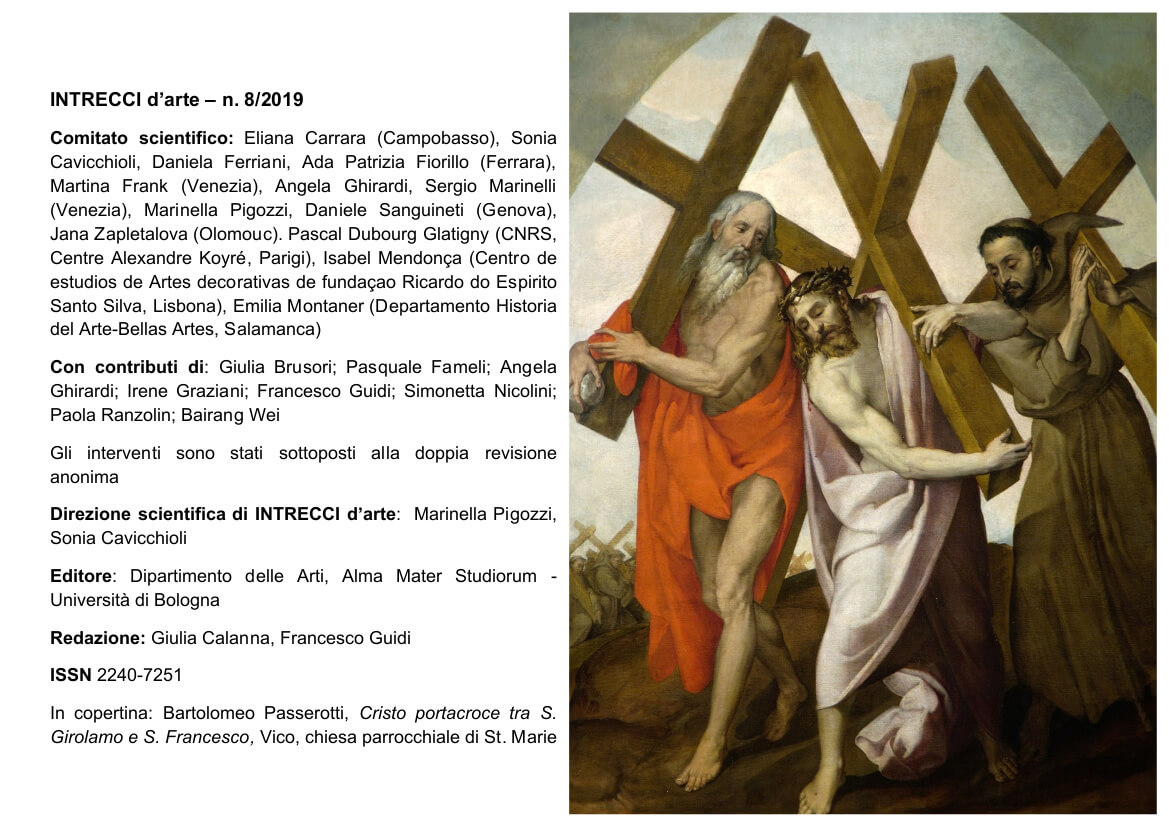Christ and the Samaritan woman: a dismembered painting by Stefano Torelli and the art de plaire of Étienne-Maurice Falconet at the court of Empress Catherine II of Russia
DOI:
https://doi.org/10.6092/issn.2240-7251/10149Keywords:
Stefano Torelli, Étienne-Maurice Falconet, Catherine II of Russia, Art and Cosmopolitism, Art of the Courts, French Taste of the European CourtsAbstract
A photograph kept at the Fondazione Federico Zeri records the existence of a painting by Stefano Torelli, representing Christ and the Samaritan woman, signed and dated 1774, of which so far just one fragment of the figure of Jesus was known (art market, 1992): the discovery offers the opportunity for an in-depth study of the late production of the Bolognese painter, which reveals his interests in the artistic culture of Louis XV's France, strengthened during the long period of career he spent at the court of Catherine II of Russia. The arrival of Étienne-Maurice Falconet in St. Petersburg in 1766 reawakened Torelli's attraction for the enchanting "art de plaire" developed in Paris by the great sculptor, already a collaborator in Sèvres of François Boucher, the "painter of graces".Downloads
Published
How to Cite
Issue
Section
License
Copyright (c) 2019 Irene Graziani
The copyrights of all the texts on this journal belong to the respective authors without restrictions.
This journal is licensed under a Creative Commons Attribution 4.0 International License (full legal code).
See also our Open Access Policy.
Images and photographs may have different terms of license.
In making material available online the Journal acts in good faith. Parties who have questions or who wish to contest the use of specific works may contact the Editor in chief.
Metadata
All the metadata of the published material is released in the public domain and may be used by anyone free of charge. This includes references.
Metadata — including references — may be re-used in any medium without prior permission for both not-for-profit and for-profit purposes. We kindly ask users to provide a link to the original metadata record.






